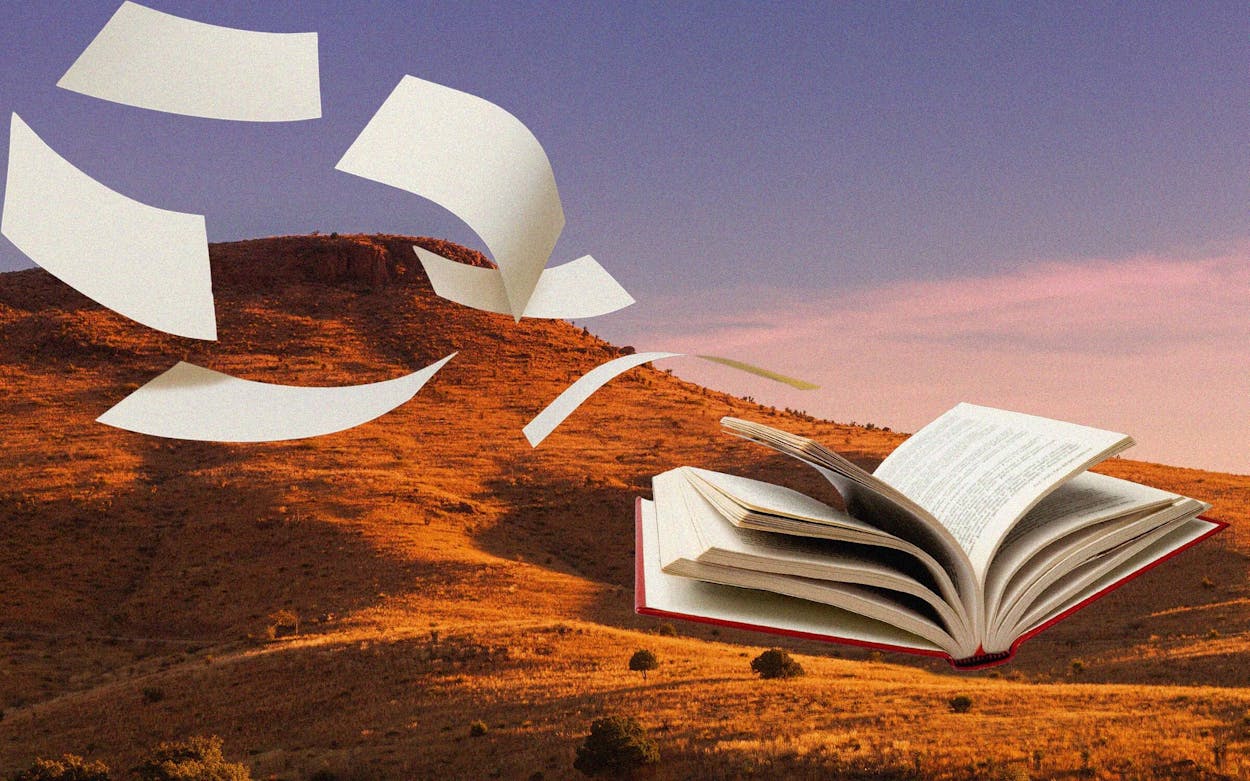In her brief introduction to Texas, Being, poet and Trinity University professor Jenny Browne writes, “Good poems are always about more than one thing.” This multiplicity also applies to Texas as a state. It’s a place often pigeonholed by outsiders as homogenous: they might believe it’s all dust and desert, that every citizen is a conservative Republican, that every Texan has been to a rodeo. And so it’s refreshing that these poems, published this month by Trinity University Press (and in conversation at an upcoming San Antonio Book Fest panel) are by poets from so many different backgrounds; they’re born-and-raised and Texpats and visitors and immigrants experiencing the complicated and “beautiful and brutal” Lone Star State.
The 47 poems in the collection were written across centuries, from the mid-nineteenth to present day. Notably, there’s an excerpt of a poem by Townsend Miller that was sold as a book at Neiman Marcus in 1939—“A Letter From Texas.” Miller, a music journalist who worked for the Austin-American Statesman in the seventies and early eighties, describes Texas geography using the palm of his hand as a guide. The excerpt begins, “John it is a strange land. John it is hard to describe.” It ends, “the tongue staggers / to speak it for the size or where to take it.”
This piece doesn’t open the anthology (the poems are alphabetical by author last name, a missed opportunity for a somewhat more fluid reading journey), though it would be a fitting one to introduce all the tongues lovingly, fearfully, intrepidly staggering to describe what it’s like to experience Texas. The more contemporary fare includes poems about the Uvalde school shooting (originally published by the Texas Observer), book bans, and immigration. The oldest poem, by Emma Lazarus, is about Russian Jewish refugees in Texas in the 1800s (Lazarus also wrote “The New Colossus,” which is mounted on the pedestal of the Statue of Liberty). One more recent piece, by Shin Yu Pai, talks about 2017’s Day Without Immigrants, a response to Donald Trump’s anti-immigrant policies. It’s fascinating, though maybe also disheartening, to see our modern issues juxtaposed with those of Texases past—same as it ever was.
Margo Tamez, of the Lipan Apache Band, writes of her ancestors’ connection to the Rio Grande and the “extractions” from their land that left “death scapes” in their wake. Jenny Boully writes a prose poem about growing up mixed race in San Antonio and identifying with the “Yellow Rose of Texas”: “in Texas, the history is unending.”
Life and death and nature are intertwined throughout. Aaron Hand, a graduate of Texas State University’s MFA program, writes “One Year in Texas,” each line beginning “my texas skeleton.” The speaker must be consumed to give birth to new beauty—they call “cankerworms to inch my collarbone until / my texas skeleton bloomed in waves of violet.” Miriam Bird Greenberg’s poem “A Heron’s Age,” in which a great blue heron is found shot by a hunter, does the same: “We are decay- / ing second by second, and certainty, so within / reach a heron’s age ago, is a winged animal.” Mag Gabbert’s speaker finds severed pigeon wings in a parking garage. Hayan Charara’s speaker’s windowsill is littered with desiccated ladybugs. To live in Texas is to confront death and its proximity to life: Charara writes, “first they had to die, which is life / not symbolism.” J. Estanislao Lopez, similarly, writes: “a coincidence of beauty and suffering, / which I would learn is an old coincidence.”
The collection includes poems that feature bigger cities—Dallas, San Antonio, Austin, El Paso, Lubbock, though conspicuously no mention of Houston—but also the smallest of towns: Happy, Jourdanton, Cotulla, Bandera, Alpine. Fady Joudah, a Palestinian American poet, writes about Palestine, Texas, and various other towns named Palestine in the U.S. The poems also teem with Texas plants and ranch animals and wild beasts and drip with the sweat of summer. The language is hot and spiky and itchy—Robert A. Ayers writes: “When the shrike snagged the rough-skinned lizard and flew to the fence and skewered it there on a barb like jerky to cure.” There’s even a poem, by Cecily Parks, made up entirely of the odd names of Texas flora: Mexican weeping juniper, uña de gato (cat claw), fall obedient plant.
It’s difficult to portray an entire state—its many peoples, past and present; its various climates, political and meteorological; and the feelings it brings up—joy, fear, shame, and, of course, pride. It’s also a delicate task to select poems that speak to a broad range of people and are accessible to both those familiar with poetry and those exploring it for the first time. Not all of these are to my taste as a poet and poetry reader, but I appreciate the breadth of material and know that not all art pleases everybody—though the book does happen to end with one of my favorite poems (“April Snow,” by Matthew Zapruder) and favorite lines: “I am president of this glass of water.”
Maybe you hate that line. Poetry, like Texas, takes all kinds. I’m glad for these 47 poems and the way they shine a light on all the glinting facets of this beautiful and baffling gem of a state.
- More About:
- Books






